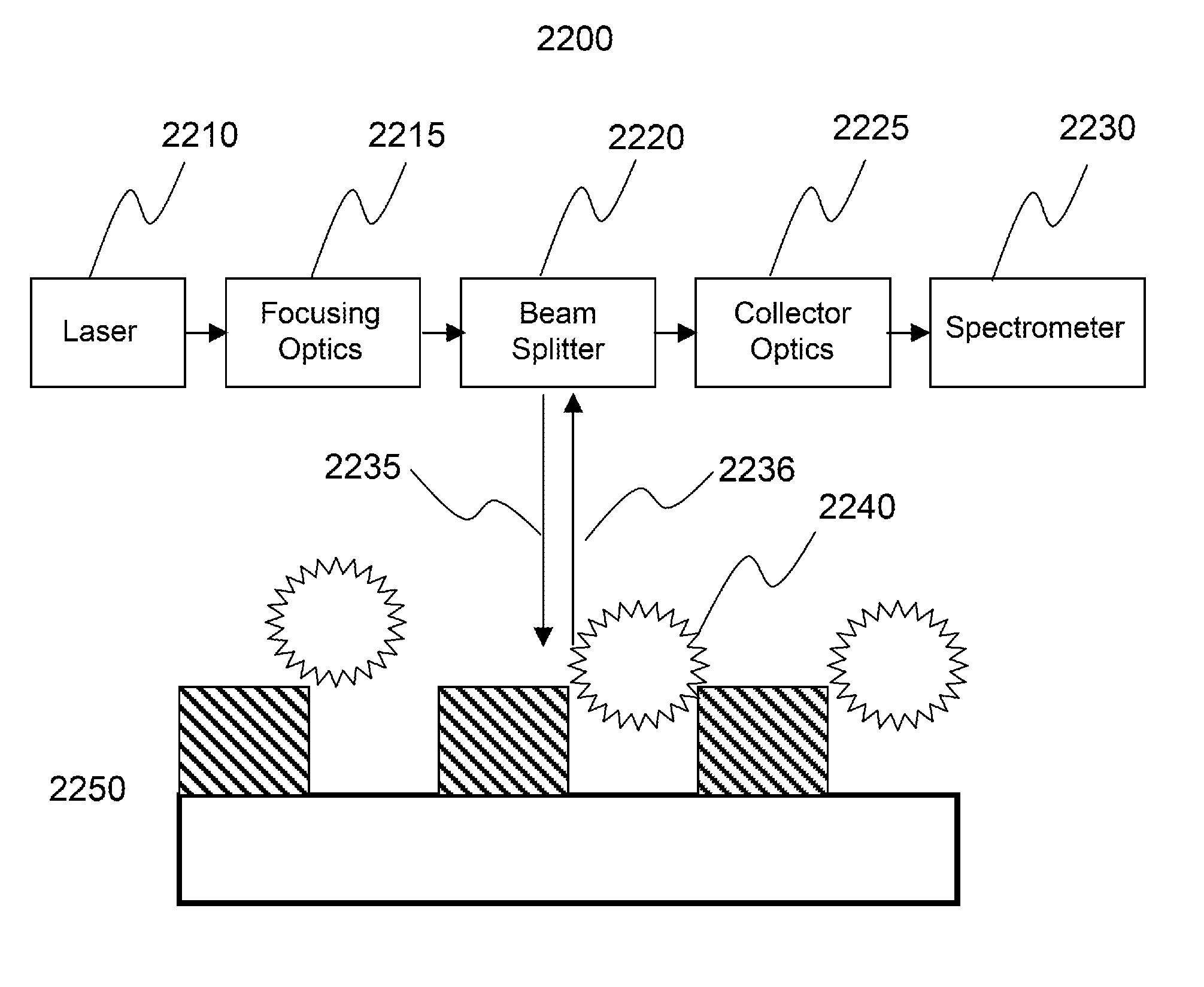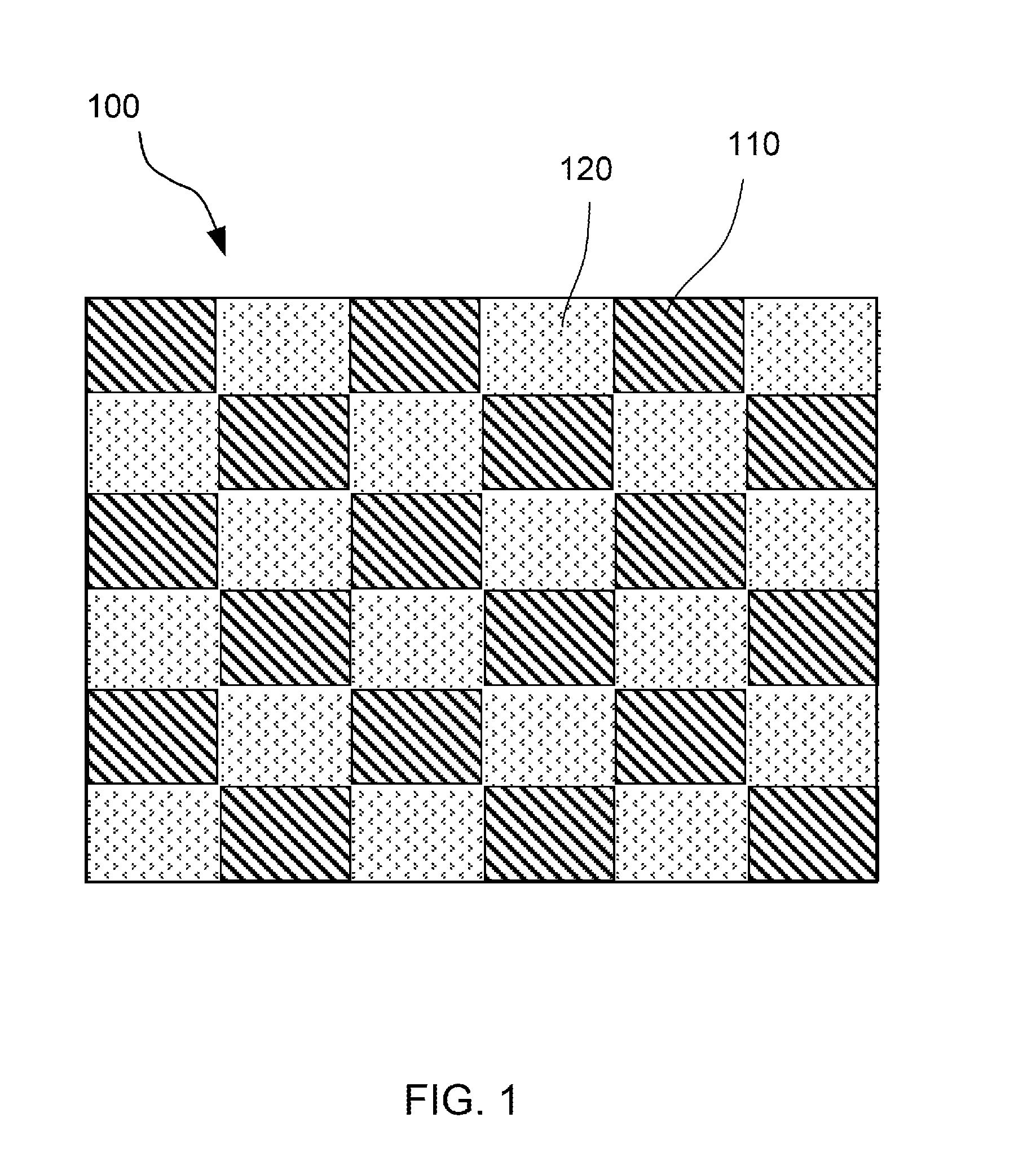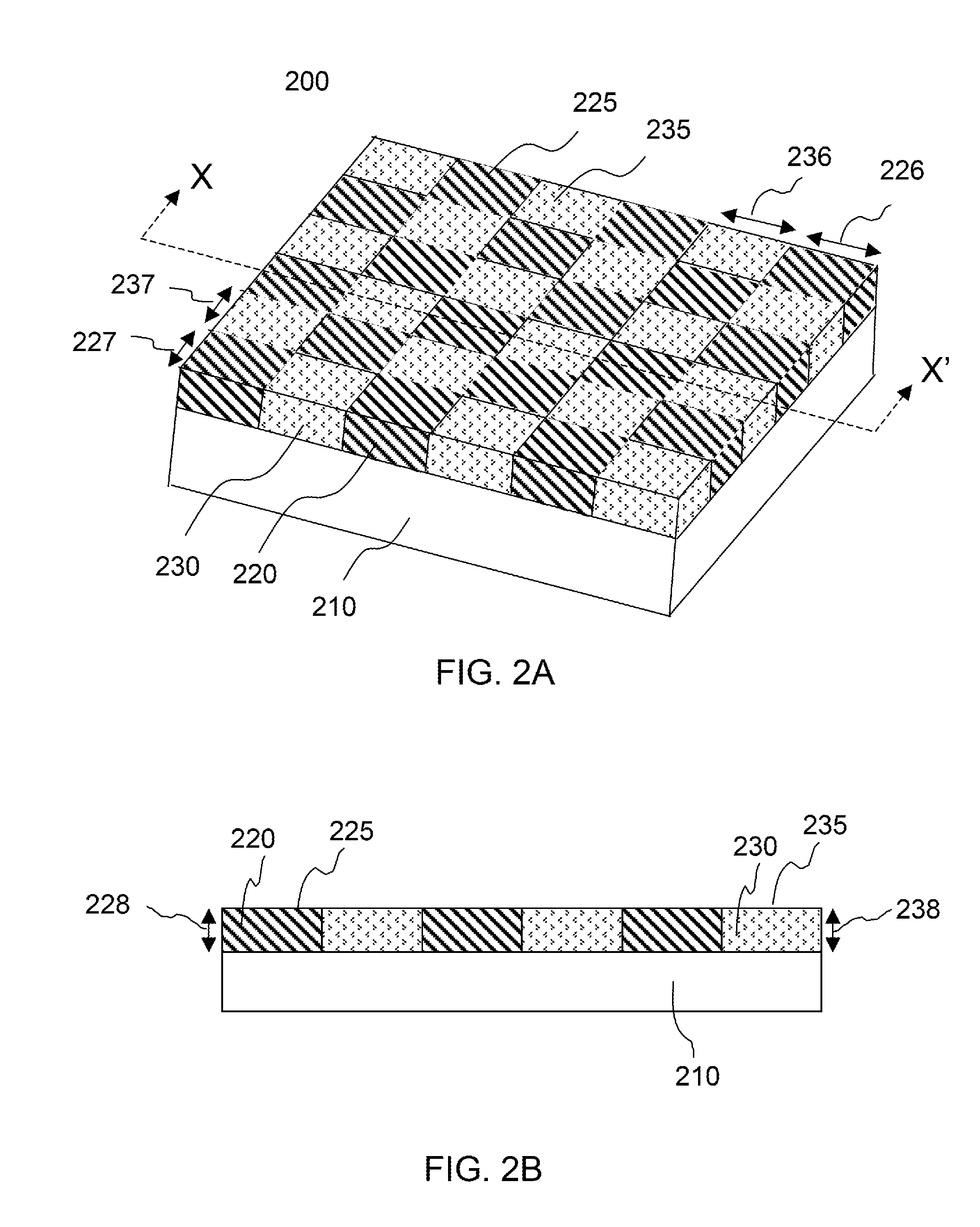Monitoring network based on nano-structured sensing devices
a nano-structured sensor and monitoring network technology, applied in the direction of optical radiation measurement, instruments, spectrophotometry/monochromators, etc., can solve the problems of unfavorable chemical molecule adsorption, weak scattering signal, additional hardware, etc., to enhance chemical molecule adsorption, enhance chemical specific binding, and enhance the effect of molecule surface binding efficiency
- Summary
- Abstract
- Description
- Claims
- Application Information
AI Technical Summary
Benefits of technology
Problems solved by technology
Method used
Image
Examples
example 1
Fabrication of Nano-Surface Arrays by Anodization Method
[0116]A thin film of Ti (about 100 nm) was deposited by e-beam evaporation of Si (100) wafer, followed by the deposition of Ag (about 100 nm). Then a 500 nm Al layer was deposited over the Ag film using physical vapor deposition method.
[0117]Then the coated Si wafer was placed into an anodizing bath with 0.3 M oxalic acid solution as the electrolytic solution. The bath was maintained at 10° C., and the anodizing voltage was set at 35 V. After anodization, nano-size narrow pores were formed in the Al2O3 layer. The diameter of the pores (or holes) can be widened by placing the wafer into a 10 wt. % phosphoric acid solution. The nano pore structure in the Al2O3 layer acted as a mask for etching active metal layer or depositing active metal layer. Thus a nano surface array was formed after removing oxidized Al layer.
example 2
Nanoimprint Lithography for Fabrication of Nano-Surface Arrays
[0118]The first step in nanoimprint is to press a mold into a thin resist cast on a substrate. The step is to duplicate the nanostructure on the mold in the resist film. The second step is to etch the resist film to form the nanostructure on the substrate.
[0119]The mold was patterned with an array of nano dots of 30 nm in feature size using electron beam lithography and reactive ion etching (RIE) on a Si wafer. PMMA was used as the resist on Au coated Si (100) wafer. A thin Ti layer was inserted between Au and Si to improve adhesive. The imprint process was carried out in vacuum at a temperate around 160° C., above the glass temperate of PMMA, at a pressure about 1000 psi. After the pattern from the mole was transferred to the Au coated Si (100), oxygen RIE was used to remove residue resist in the compressed areas in PMMA. Then, the pattern was etched into the Au film. After removing the PMMA, a nano-hole array was formed...
example 3
1) Demonstration of Nano Array
[0120]FIG. 24 is an example of scanning electron microscopy imaging of such nano surface arrays. The left image shows an array of nano-holes with 17 nm diameter and about 30 nm spacing. The image on the right shows an array of nano-holes with 38 nm diameter and about 10 nm spacing.
2) Demonstration of Surface Enhanced Raman Using the Nano-Surface Arrays
[0121]A Raman scattering system, as shown in FIG. 23B, includes a Raman nano-surface array on silicon, a semiconductor laser, which can collect the reflected lights on the surface. The sampling methods include: the array is placed in a solution container or a gas probe cell; or is just lie down horizontally, then to inject liquid chemical onto the surface; or the array is covered by a layer of glass or polymer without physical contact, liquid or gas sample is injected through a microfluidic channel.
[0122]FIG. 23C shows Raman spectra of xylenes. In this example, Raman spectrum of m-xylene, o-xylene, p-Xylen...
PUM
 Login to View More
Login to View More Abstract
Description
Claims
Application Information
 Login to View More
Login to View More - R&D
- Intellectual Property
- Life Sciences
- Materials
- Tech Scout
- Unparalleled Data Quality
- Higher Quality Content
- 60% Fewer Hallucinations
Browse by: Latest US Patents, China's latest patents, Technical Efficacy Thesaurus, Application Domain, Technology Topic, Popular Technical Reports.
© 2025 PatSnap. All rights reserved.Legal|Privacy policy|Modern Slavery Act Transparency Statement|Sitemap|About US| Contact US: help@patsnap.com



